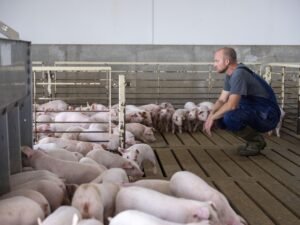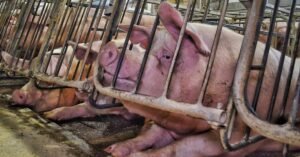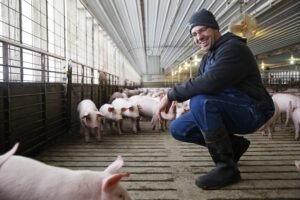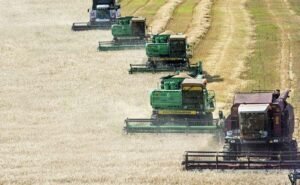The feeder pig market has witnessed a noteworthy ascent in recent days, with cash prices climbing to an average of $115.58 per head, representing a $3.25 increase from the previous week’s figures. This upward trajectory arrives amid complicated market dynamics that have characterized the pork industry throughout 2025.
Recent data from the Agricultural Marketing Service shows that total receipts for the week ending April 25, 2025, reached 102,475 head. Market analysts suggest this robust volume indicates persistent demand despite elevated price levels. Farmers across multiple regions have responded enthusiastically toward these favorable conditions, which stand in marked contrast to the more subdued market environment observed during parallel periods in previous years.
The early-weaned segment, specifically pigs weighing 10 to 12 pounds, commanded prices ranging from $34.00 to $54.00 per head for larger lot sizes exceeding 1,200 head, with a weighted average of $45.06 delivered. This represents a substantial improvement from last week when feeder pig prices averaged $82.94, which was only up $0.13 from the preceding period. The swift evolution of market conditions has surprised even seasoned industry participants, creating opportunities for producers which capitalize on the momentum.
When examining historical context, the current price landscape demonstrates remarkable strengthening compared to earlier this year. In January 2025, cash prices for 40-pound feeder pigs averaged $98.98 per head, ranging between $85.00 and $107.00. The current price levels therefore reflect continued market buoyancy that has persisted beyond typical seasonal patterns, where 40-pound pigs traditionally reach their seasonal price zenith during March or April.
Several pillars are supporting this market elevation. Foremost among these factors is profitability expectation. According to industry research, a 1% increase in anticipated market hog prices typically lifts cash prices for 40-pound pigs by approximately 1.875%. The market sentiment looks favorable with CME Lean Hog futures showing healthy price levels for upcoming months: May 2025 at 92.225, June 2025 at 100.275, July 2025 at 100.275, and August 2025 at 98.225.
Interestingly, prices for smaller pigs (10-12 pounds) demonstrate less sensitivity to fluctuations in expected market hog prices compared with their heavier counterparts. This decreased elasticity might stem partly from the extended timeline to market – approximately five additional weeks relative to 40-pound pigs. Despite this variable responsiveness, both weight categories continue maintaining strong valuation.
The reported volume of cash-traded feeder pigs has remained above average, with a recent reporting period showing 25,080 head. This healthy transaction volume alongside rising prices suggests a market characterized by genuine demand rather than speculative positioning. The consistent buyer presence indicates confidence in future profitability despite the elevated acquisition costs.
Industry experts note that regional variations exist within the broader market trend. Some areas have experienced even more pronounced price improvements due to localized supply constraints or transportation advantages. These geographic discrepancies present strategic opportunities for buyers willing to source from different regions, although transport costs sometimes offset potential savings.
While the overall trend suggests continued strength, prudent producers are exercising caution by the risks inherent in high-price environments. The current market structure creates a challenging scenario where input costs must be carefully managed against projected revenue. According to calculations using the Iowa State University Estimated Returns Model, a 10-12 pound pig purchased earlier this year would require a breakeven selling price of $108.07 per cwt, which exceeded certain futures contract prices at that time.
For market participants navigating these complex waters, diversification strategies and careful risk management become paramount considerations. The substantial price appreciation observed since January underscores the volatile nature of contemporary agricultural markets, demanding flexibility and foresight from those involved in production decisions.
With futures markets signaling continued support for prices throughout the summer months of 2025, industry sentiment remains cautiously optimistic regarding near-term prospects for the feeder pig sector.






